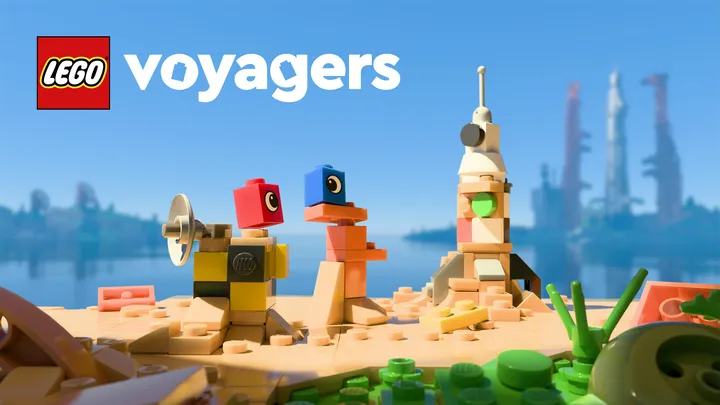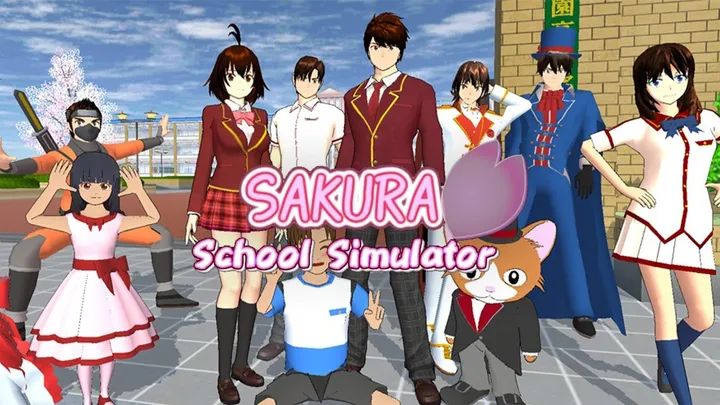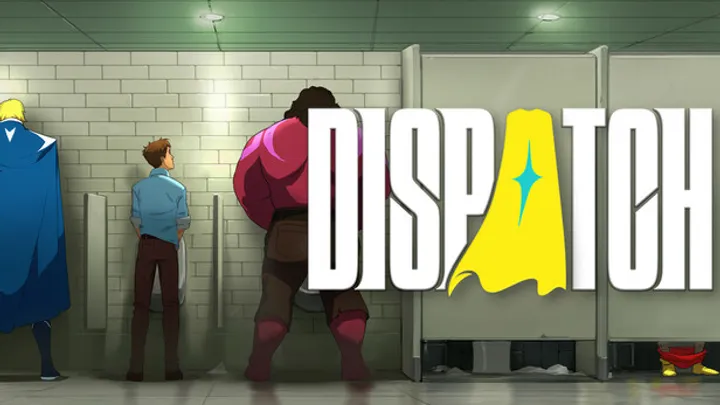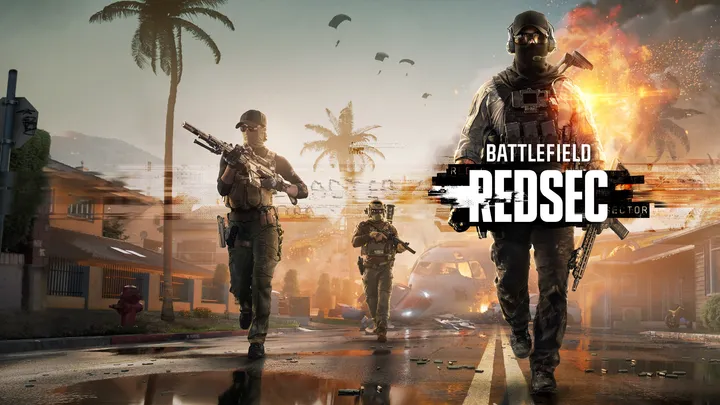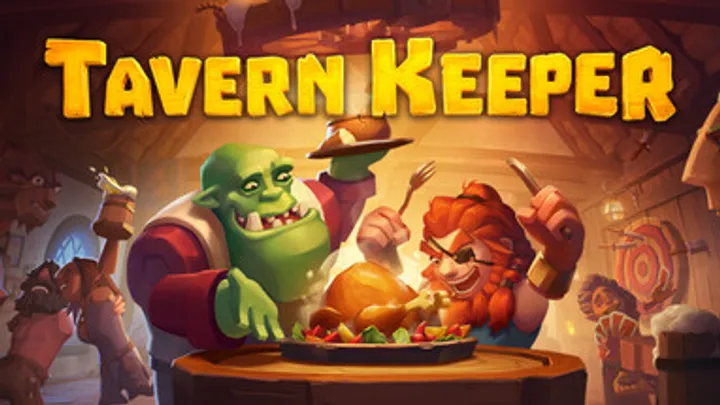
Introduction
Final Fantasy XVI marks a bold return to the franchise's roots, delivering a gritty narrative intertwined with the themes of power, responsibility, and the personal costs of war. Set in the tumultuous world of Valisthea, players traverse a landscape deeply affected by Eikons—great creatures wielding tremendous power—and the Dominants, individuals chosen to wield their abilities. Central to the story of Final Fantasy XVI is the exploration of how power influences relationships, societies, and individual fates. This article delves into the ramifications of power in the game, examining how it affects the characters of Clive Rosfield, his allies, and the various factions embroiled in the struggle for control, ultimately shaping the narrative's core conflict.
Understanding the Landscape of Valisthea
A World Divided by Crystals
Valisthea is a land divided among various factions and nations, each governed by the presence of Mothercrystals—powerful entities that bestow a form of magic and prosperity to those in their vicinity. The crystals become symbols of both hope and devastation, giving rise to a culture that venerates them while breeding inequality and conflict.
The Role of Mothercrystals
Each nation in Valisthea is affected differently by its respective Mothercrystal. Dominants serve as key figures in representing their nations and wielding the power of Eikons, but this power comes at a great cost. The Mothercrystals not only sustain the countries but also tether them to a cycle of reliance and conflict.
Key Impacts of Mothercrystals
- Political Power: Nations are in a constant struggle for control over their Mothercrystals, leading to geopolitical tensions.
- Societal Structure: The presence of a Dominant often creates societal hierarchies, with those able to wield Eikon powers holding significant influence.
- Resource Dependency: The reliance on Mothercrystals leads to exploitation, causing resentment and rebellion among those left powerless.
Eikons and Their Dominants
The Eikons represent a primal force within the game, each embodying unique aspects of existence, from war to love. Their Dominants are not merely vessels; they are burdened with the weight of expectations and responsibilities associated with their powers.
The Burden of Power: Clive Rosfield’s Journey
A Legacy of Expectation
Clive Rosfield, the protagonist of Final Fantasy XVI, is introduced as the firstborn son of the Archduke of Rosaria. From a young age, he is imbued with expectations to serve his nation, but his path diverges due to the circumstances surrounding the power of the Eikon Ifrit. Unlike his younger brother, Joshua, who inherits the mantle of the Dominant, Clive wrestles with feelings of inadequacy and the question of what it means to be "powerful."
The Path of the Fallen
As Clive's journey begins, he becomes embroiled in conflicts that reveal how fragile alliances can be when power is involved. His initial attempts to protect Joshua showcase the depth of familial bonds but also highlight the inherent dangers that accompany such responsibilities. Clive's development throughout the game revolves around his grappling with loss, vengeance, and ultimately, the search for redemption.
Emotional Stakes of Power
- Family Dynamics: Clive's protective nature toward Joshua illustrates the personal costs of power within familial ties, setting the stage for conflict.
- Internal Struggle: Clive’s transformation from a noble protector to a vengeful warrior shows the corrupting influence of power and its impact on personal values.
- Quest for Identity: As he discovers more about his capabilities, Clive must confront the true meaning of power and what it symbolizes.
Clive's Evolution
Throughout the game, Clive's journey adds layers to his character. As he grapples with the consequences of power, the narrative confronts the complexities of responsibility that come with it. Eventually, Clive transitions from a man seeking revenge to one who strives for a greater good.
The Relationships Forged Through Conflict
Bonds of Companionship
As Clive's journey unfolds, significant relationships blossom between him and the characters he encounters. These companions serve not only as gameplay mechanics but also as emotional anchors that enhance the narrative, illustrating how power can both unite and divide.
Key Companions in Clive's Journey
- Jill Warrick: A childhood friend and fellow Dominant, her relationship with Clive adds complexity to the narrative, intertwining their fates through shared burdens and responsibilities.
- Dion Lesage: The Dominant of the Eikon of Light, Dion emerges as a foil to Clive, provoking debates about duty and the exercise of power in governance.
- Torgal: Clive’s loyal wolf companion, representing the bond between humanity and nature, reinforces themes of loyalty and the sacrifices made for those one loves.
The Ties That Bind
Each of these relationships adds emotional depth to Clive’s character and drives the narrative forward. The complexities of their bonds exemplify how personal connections are tested in the face of monumental power struggles, creating layers of drama that resonate throughout the game.
Themes of Loyalty and Sacrifice
- Loyalty as Strength: Clive’s companions support him through their shared experiences, demonstrating how unity enables them to confront the immense challenges posed by their world.
- Sacrifices for Power: The struggle between personal desires and responsibilities surfaces repeatedly, producing poignant moments that challenge the characters.
The Nature of Villainy: Understanding the Antagonists
The Human Side of Antagonism
In Final Fantasy XVI, villains are not merely evil for the sake of evil. Characters such as Hugo Kupka and Barnabas Tharmr possess their own motivations and backstories that illuminate their actions and reveal the complexities of their desire for power.
The Consequences of Seeking Power
Hugo, the Dominant of the Eikon of the Blazing Phoenix, embodies the consequences of wielding great power without understanding its implications. His ambitions highlight how the lust for dominance can corrupt even the noblest intentions, leading to a reign of terror and destruction.
Examining Key Antagonists
- Hugo Kupka: His desire for control and dominance showcases the destructive forces that can arise from wielding unchecked power.
- Barnabas Tharmr: As a cunning tactician, his villainy is rooted in a desire for chaos, depicting how varying philosophies surrounding power can clash violently.
Understanding Their Motivations
By peeling back the layers of these antagonists, Final Fantasy XVI challenges players to understand the psychological implications of power and the differing paths individuals take in pursuit of it. Their motivations reflect how personal traumas and aspirations can warp the noblest quests.
The Cost of Power: Moral Dilemmas and Consequences
Choices and Their Impact
The theme of power inevitably leads to moral dilemmas that challenge characters to make difficult decisions. As Clive and his companions navigate the landscape of Valisthea, they are confronted with choices that reflect the cost of their quests.
Defining Moments of Choice
One of the game’s crucial choices centers around the treatment of the crystals. Characters must decide whether to uphold the status quo or seek to dismantle the very foundations of their society. These questions of morality lead to introspection about the sacrifices required to pursue a greater good.
Examples of Moral Dilemmas
- Sacrifice for Power: Characters may face situations where sacrificing one for the many presents itself as a logical choice, but comes with profound emotional consequences.
- Using Eikons in War: The ethical implications of harnessing Eikon power for war create tension between characters, forcing them to confront their beliefs about morality and responsibility.
The Ripple Effect of Choices
The game illustrates that every choice has a domino effect, impacting both characters and the larger world of Valisthea. Clive learns that power is not just an asset; it's a burden that comes with heavy responsibilities and consequences.
The Political Landscape of Valisthea
Factions and Conflict
The struggle for power in Final Fantasy XVI is further complicated by the political landscape, involving various factions vying for control, often at the cost of innocent lives. These factions are characterized by their unique philosophies and approaches to power.
Major Factions in the Struggle
- The Kingdom of Rosaria: Representing a traditional monarchy, its dependence on the Mothercrystal becomes a point of vulnerability.
- The Iron Kingdom: A militaristic faction that utilizes technology to usurp power, valuing might over morality.
- The Crystalline Alliance: Consisting of multiple nations working together to safeguard the Mothercrystals, their unity is constantly tested by internal conflicts.
The Impacts of War
The tension between these factions often leads to war, showcasing the destructive potential of unchecked ambition. The narrative emphasizes that political power is fragile and can collapse under the weight of greed, manipulation, and betrayal—a cautionary tale mirrored in real-world dynamics.
Themes of Redemption and Forgiveness
The Path to Redemption
As the plot unfolds, themes of redemption weave through Clive's journey. Having initially succumbed to vengeful desires, his evolution is rooted in the quest to find purpose and forgiveness in a world defined by conflict.
Clive's Redemption Arc
Clive’s path toward redemption becomes a driving force within the narrative, allowing players to witness his growth as he learns to grapple with his past and the relationships he must maintain to move forward. Engaging with themes of forgiveness serves to deepen the connections between characters and enhances their emotional arcs.
Key Moments of Redemption
- Reconciling with the Past: Clive’s acceptance of his own shortcomings allows him to heal, transforming his relationship with Joshua into one of mutual understanding rather than guilt.
- Forging New Paths: By extending compassion to his adversaries, Clive emphasizes the power of redemption through actions rather than simply intentions.
The Role of Forgiveness
Throughout his journey, Clive learns that forgiveness is essential not only for personal growth but also for healing widespread societal rifts. The game ultimately conveys that confronting the past can lead to a brighter future—a message that resonates deeply with players.
The Future of Power in Valisthea
Adjusting to a Changing Landscape
As Final Fantasy XVI comes to a close, the future of Valisthea hangs in the balance. Clive's choices regarding power and responsibility shape the trajectory of the land itself, inviting players to reflect on the broader implications of their actions.
The Legacy of Power
The narrative emphasizes that power is not inherently malevolent; rather, it is how individuals choose to wield it that determines its impact. The evolution of Valisthea will depend on the collective choices made by its inhabitants, hinting at a hopeful future where the lessons learned guide future generations.
Paths to Progress
- Unity and Collaboration: Clive’s vision for a future that embraces cooperation rather than conflict symbolizes a shift in Valisthea’s understanding of power.
- Sustainable Use of Resources: The game suggests that harmony between the Dominants and the Mothercrystals can lead to a more balanced existence for all, advocating for a collaborative relationship with power.
Conclusion: The Legacy of Power in Final Fantasy XVI
Final Fantasy XVI masterfully explores the themes of power, responsibility, and the human condition through its characters, narrative choices, and the world of Valisthea. As players journey through this grim yet beautiful land, they are faced with profound dilemmas that challenge their perceptions of morality and agency. Clive Rosfield’s evolution from a vengeful warrior to a champion of redemption encapsulates the essence of the game's philosophy: that power must be wielded wisely and compassionately, even in the face of overwhelming conflict.
Ultimately, Final Fantasy XVI reminds players that while the allure of power is tantalizing, the true essence of heroism lies in understanding its consequences and learning to forge connections that transcend the burdens of the past. The path forward is illuminated by the choices made along the way, illustrating how legacy and responsibility shape the future of individuals and their realms alike.
In summary, Final Fantasy XVI examines the interplay of power and responsibility, exploring how choices impact relationships, society, and the future in the world of Valisthea.
15:14
Write an article about any popular game Sonic Frontiers, the content must not be general. Write deeply about a specific issue in that game with at least 2000 words, including the opening title, paragraph and conclusion, with 10 h2 tags arranged according to time and meaning, each h2 tag its content tag consists of 2 to 3 paragraphs, with h3, h4 tags, a list if possible.
The Evolution of Open World Design in Sonic Frontiers
Introduction
Sonic Frontiers represents a significant shift for the long-running franchise, introducing a semi-open world structure that departs from the traditional linear platforming experienced in previous titles. This game, developed by Sonic Team, invites players to explore the expansive Starfall Islands, offering a mix of classic Sonic speed with modern open-world paradigms. However, the game isn’t without its challenges, particularly in how it navigates the balance between freedom and direction within its design. This article delves into the specific issue of open world design in Sonic Frontiers, analyzing how the game's structure affects gameplay, player exploration, and the overall experience, while also comparing it to the expectations set by contemporary open-world titles.
The Foundations of Open World Design
A Shift in Sonic’s Gameplay Paradigm
Historically, Sonic games have relied on linear stage designs, where players speed through meticulously crafted levels filled with rings, enemies, and obstacles. With Sonic Frontiers, the developers aimed to break this mold, providing a more exploratory experience that encourages players to roam the environment. This shift marks a response to the evolving gaming landscape, where open worlds have become synonymous with freedom of exploration.
Understanding the Open World Structure
Sonic Frontiers introduces players to the Starfall Islands, which act as a cohesive ecosystem filled with distinct regions and thematic environments. The game combines traditional Sonic gameplay mechanics—such as boosting and grinding—with platforming challenges set within an expansive landscape. Players can venture off the main path to discover collectibles and secrets, a departure from the typical goal-oriented design of previous titles.
Key Elements of the Open World Structure
- Interconnected Islands: The Starfall Islands consist of diverse biomes, each offering unique challenges and aesthetics that encourage exploration.
- Collectibles and Upgrades: Hidden items such as memory tokens, red seeds of power, and other collectibles incentivize players to explore and engage with the environment.
- Dynamic Environment: The open world is populated with enemies, environmental puzzles, and platforming sections that require Sonic’s speed and agility, demanding player investment in both combat and exploration.
The Balance Between Freedom and Direction
One of the primary aims of an open world is to give players the freedom to explore at their own pace. However, this can lead to fragmentation of the gameplay experience if not managed correctly. With Sonic Frontiers, the challenge lies in maintaining a balance between allowing exploration and providing clear objectives.
The Player Experience: Exploring the Open World
The Thrill of Exploration
Exploration is at the heart of Sonic Frontiers, and players can experience the thrill of uncovering secrets and paths that are not immediately apparent. The game encourages players to utilize Sonic’s speed not just for racing through levels but for discovering hidden areas that lead to rewarding gameplay experiences.
Engaging with Environmental Puzzles
Each island in Sonic Frontiers features environmental puzzles that challenge players to think creatively about how to navigate the space. These puzzles often require Sonic to manipulate the environment, activate mechanisms, or engage in combat—all while maintaining his signature speed.
Example Puzzles and Interactions
- Ancient Ruins: Players may encounter ruins that offer time-based challenges requiring quick reflexes and timely boosts.
- Puzzle Constructs: Players often find large constructs or closed pathways that require solving to unlock new areas or gather collectibles.
- Dynamic Enemies: Encounters with diverse enemies offer not only combat challenges but also environmental integration, as players can use the terrain to their advantage.
The Satisfaction of Discovery
The gratification of discovery in Sonic Frontiers is not limited to finding collectibles; it includes the sense of achievement in mastering the world itself. Each successful traversal of a challenging platforming section enhances the feeling of competence and agency, which is crucial in engaging players.
The Challenge of Navigation and Direction
Potential Frustrations of Open World Exploration
While the opportunity for exploration presents new gameplay possibilities, it also introduces challenges in navigation. Players may find themselves overwhelmed by the sheer scale of the environment or uncertain about where to go next.
The Issue of Linear Objectives
Sonic Frontiers incorporates a mix of main and side missions that can sometimes lead to confusion regarding the player's ultimate objectives. This hybrid design can disrupt the flow of exploration and lead to moments of frustration.
Key Navigation Frustrations
- Map Clarity: The in-game map might overwhelm players with too much information or, conversely, lack detail on how to navigate to certain locations.
- Ambiguous Objectives: Some side quests may not adequately explain what is required for completion, leading to players wandering without purpose.
- Environmental Complexity: While multiple routes offer players freedom, they can also create uncertainty about the best path forward, diluting the sense of progression.
Balancing Freedom with Guidance
To counterbalance these frustrations, the developers integrated guideposts and markers that can help players identify important objectives and collectibles. However, the effectiveness of these markers varies throughout the game, and some players may still feel lost in the sprawling environments.
Comparisons to Other Open World Titles
Drawing Parallels with Similar Games
In evaluating the open world design of Sonic Frontiers, it is useful to compare it to other successful open-world titles. Games like Breath of the Wild, Ghost of Tsushima, and Spider-Man have excelled in terms of navigation and player engagement within vast worlds.
Lessons from The Legend of Zelda: Breath of the Wild
Breath of the Wild is lauded for its intuitive approach to exploration, encouraging players to venture into the world without overwhelming them with excessive objectives. Its emphasis on player choice fosters a genuine sense of adventure that players seek in open-world experiences.
Key Takeaways
- Natural Environmental Design: Breath of the Wild employs a design philosophy where players are subtly guided by the game’s environment rather than by explicit markers.
- Clear Objectives: The game balances open exploration with clearly defined objectives, allowing for engaging gameplay without frustrating ambiguity.
- Dynamic Interactions: The game’s mechanics encourage experimentation, rewarding players for trying unconventional methods to solve challenges.
The Unique Position of Sonic Frontiers
While Sonic Frontiers aims to capture the spirit of traditional Sonic gameplay, it also strives to innovate within the open-world genre. This dual approach can sometimes lead to conflicting design philosophies, presenting a unique challenge for the developers. Balancing Sonic's speed-focused gameplay within a sprawling environment has proven to be complex yet rewarding.
The Mechanics of Speed and Exploration
Speed as a Core Gameplay Element
At its core, Sonic Frontiers retains the franchise's hallmark: speed. Players expect to dash through environments at breathtaking speeds, which introduces a distinctive challenge in an open-world context. The game attempts to integrate this speed with exploration and puzzle-solving.
The Speed Loop
The primary mechanics emphasize Sonic’s ability to build momentum, offering players a rewarding experience when they master navigating the world swiftly. This “speed loop” is designed to make players feel powerful and engaged.
Elements of the Speed Loop
- Boost Mechanics: Invoking Sonic’s boost ability allows players to traverse long distances quickly, but timing is essential to maintain momentum.
- Parkour Elements: The game incorporates parkour-style movements that enable Sonic to navigate vertical spaces, making exploration more dynamic.
- Dash and Grind Systems: Players can utilize dash pads and rails to build speed, allowing for quick traversal between regions while integrating classic Sonic elements.
Challenges of Integrating Speed in Open World
While speed is a defining characteristic of Sonic’s gameplay, integrating it into an open-world format poses its own set of challenges. The rapid pace can make it difficult to fully appreciate environmental details and story elements, leading to a disconnection between the player and the game world.
Engaging Combat Systems
Combat Design in the Open World
Sonic Frontiers incorporates a combat system that breaks away from previous titles, aiming to create a more engaging experience. This system integrates seamlessly with the game's exploration mechanics, but its execution remains a topic of discussion.
The Combat Mechanics
The combat in Sonic Frontiers involves a series of moves and combos that allow players to unleash powerful attacks against a variety of enemies. It contrasts with traditional button-mashing mechanics in previous Sonic titles by introducing an upgrade system that promotes strategic engagement.
Key Combat Features
- Combat Skills: Sonic can unlock new abilities that enhance his combat repertoire, encouraging players to experiment with different tactics.
- Enemy Types: A diverse array of enemies presents varying challenges, compelling players to adapt their strategies in real-time.
- Chaining Attacks: Engaging in successive attacks can break enemy defenses, allowing for satisfying combos that creatively utilize Sonic’s skills.
Assessing Combat within Open World Constraints
The open-world design impacts the combat experience. While players can engage enemies dynamically, the challenge often lies in how well these encounters are integrated into exploration. Some players may find combat sequences detract from the fluid exploration that Sonic is known for.
Narrative Layers and Character Development
Storytelling in an Open World
Sonic Frontiers not only redefines gameplay mechanics but also attempts to weave a more mature narrative than previous installments. The story centers around Sonic's quest to rescue his friends and uncover the truth behind the mysterious Starfall Islands.
Character Arcs
The game emphasizes character development, showcasing Sonic's relationships with Knuckles, Tails, and Amy. Each character plays a crucial role in advancing both the story and gameplay, enriching the overall experience.
Key Character Moments
- Friendship Dynamics: The interactions between Sonic and his friends deepen the emotional stakes of the narrative, providing a cohesive sense of purpose.
- Emotional Resonance: The game grapples with themes of loss and discovery, and Sonic’s resolve to rescue his friends adds a personal layer to the adventure.
The Integration of Narrative and Gameplay
Challenges arise when integrating narrative elements into the open-world structure since players can choose when and how to engage with story segments. While transitions between exploring and story moments are crafted skillfully, some players may feel disconnected from the overarching narrative thread while engaging in freedom-based gameplay.
Conclusion: A New Frontier for Sonic
Sonic Frontiers stands as a pivotal entry in the series, representing an ambitious step toward a modern open-world design while trying to maintain the essence that fans have come to love. While the execution of this vision has yielded diverse reactions, it ultimately invites players to experience a combination of speed, exploration, and engagement that is both fresh and nostalgic.
The challenges related to navigation, combat, and narrative structure highlight the complexities of transforming Sonic's traditional gameplay style into an open world. However, the innovations in world design, puzzles, and character interplay signal a promising evolution for the brand. The quest for a perfect balance in free exploration and structured objectives continues, offering valuable lessons for future Sonic titles.
As players immerse themselves in the expansive landscapes of the Starfall Islands, Sonic Frontiers ultimately underscores a poignant message: the future of the franchise is indeed one worth exploring—if only to discover what lies on the horizon.








